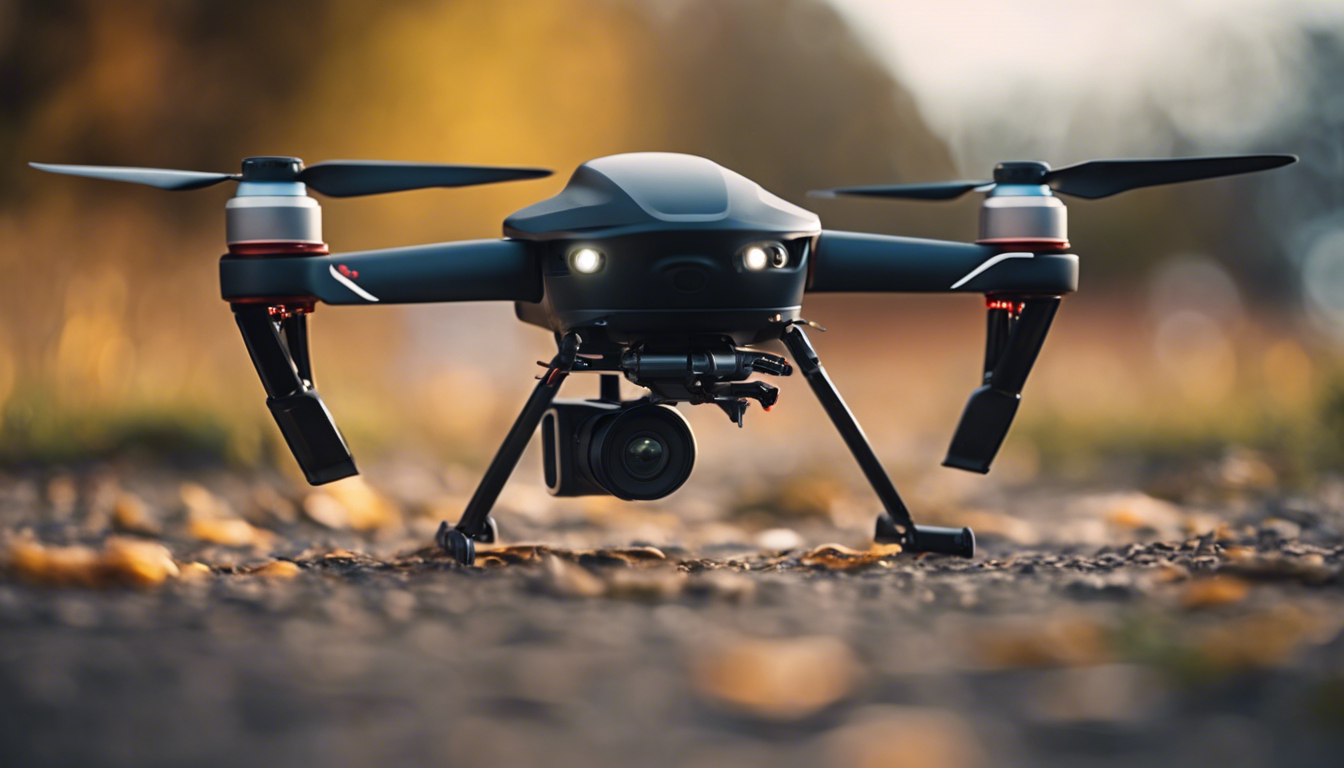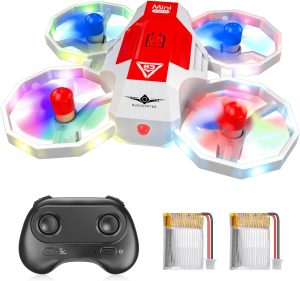
Consumer drones have become increasingly popular in recent years, offering a unique and exciting way to capture aerial footage and explore the world around us. These small unmanned aerial vehicles (UAVs) have entered the mainstream and are now more accessible than ever before. In this article, we will delve into the basics of drone technology, focusing on consumer drones, and explore various aspects and details that are important to know.
1. Types of Consumer Drones
Consumer drones come in various shapes, sizes, and price ranges. Here are some of the most common types:
- Quadcopters: Quadcopters are the most popular type of consumer drone and are equipped with four rotors. They offer excellent stability, maneuverability, and ease of use.
- Hexacopters: Hexacopters have six rotors instead of four, providing added redundancy and stability. They are often used for professional aerial photography and videography.
- Fixed-wing drones: Fixed-wing drones resemble traditional airplanes. They can cover longer distances and stay airborne for extended periods compared to multirotor drones, making them perfect for mapping or surveillance missions.
- Racing drones: Racing drones are designed for speed and agility. They are built for competitive racing events and offer a thrilling flying experience.
2. Key Components of a Drone
To understand how consumer drones function, it’s essential to be familiar with their key components:
- Frame: The frame forms the main structure of the drone and provides support for other components.
- Motors and ESCs: Motors and Electronic Speed Controllers (ESCs) power the rotors and control their speed.
- Flight Controller: The flight controller is the brain of the drone, responsible for interpreting commands from the pilot and stabilizing the aircraft.
- Battery: Drones are powered by rechargeable lithium-polymer (LiPo) batteries, which provide the necessary electrical energy for flight.
- Camera and Gimbal: Many consumer drones come equipped with cameras and gimbals to capture high-quality aerial photos and videos.
- Remote Controller: The remote controller allows the pilot to control the drone’s flight, camera, and other functions.
- Propellers: Propellers generate the thrust needed to lift the drone off the ground and maneuver it in different directions.
3. Flight Controls and Safety
Operating a consumer drone requires understanding the flight controls and following safety measures. Here are some essential tips:
- Familiarize with the controls: Get to know your drone’s remote controller and practice flying in a controlled environment before attempting more complex maneuvers.
- Understand flight modes: Most consumer drones offer different flight modes, such as GPS mode, Attitude mode, and Sport mode. Each mode has specific characteristics, so make sure to understand and use them appropriately.
- Be aware of regulations and restrictions: Before flying your drone, research the local regulations and restrictions in your area. Follow any licensing requirements, guidelines, or flight restrictions to ensure safe and legal operation.
- Maintain line of sight: Always keep your drone within visual line of sight. This helps maintain control and prevents collisions with other aircraft or objects.
- Respect privacy: Be respectful of others’ privacy when flying your drone. Avoid flying over people, private property, or restricted areas unless you have explicit permission.
4. Tips for Capturing Photos and Videos
If your consumer drone comes equipped with a camera and gimbal, here are some tips to capture stunning aerial photos and videos:
- Plan your shots: Before taking off, identify the subject or area you want to capture. Plan your flight path and consider factors like lighting conditions, composition, and camera settings.
- Use stabilization features: Take advantage of your drone’s stabilization features, such as a gimbal, to capture smooth and steady footage.
- Experiment with angles and perspectives: Drones provide unique perspectives from the sky. Experiment with different angles, heights, and camera orientations to capture captivating shots.
- Shoot in RAW format: If possible, shoot in RAW format instead of JPEG. RAW files contain more information and provide flexibility during post-processing.
- Edit your footage: Post-processing can greatly enhance the quality of your aerial footage. Experiment with editing software to fine-tune colors, contrast, and other parameters.
5. Maintenance and Upkeep
To ensure the longevity and optimal performance of your consumer drone, regular maintenance is essential. Think these maintenance tips:
- Inspect before each flight: Before every flight, conduct a routine inspection of your drone. Check for any loose components, damage, or signs of wear and tear.
- Keep batteries in good condition: Follow the manufacturer’s guidelines for charging, storage, and maintenance of your drone’s batteries. Avoid overcharging or discharging them excessively.
- Clean your drone: After flying in dusty or dirty environments, clean your drone to remove any debris or dirt that may affect its functionality.
- Update firmware: Manufacturer updates often include bug fixes and performance improvements. Regularly check for and install the latest firmware updates for your drone and its components.
Consumer drones offer endless possibilities for aerial exploration, photography, and videography. Understanding the basics of drone technology, flight controls, safety measures, and maintenance is vital for a safe and enjoyable flying experience. By following these tips and insights, you can make the most of your consumer drone and capture breathtaking moments from above.
Disclaimer: Ensure that you comply with all local laws and regulations regarding drone operation. The information provided in this article is meant for informational purposes only and should not be considered legal advice.
